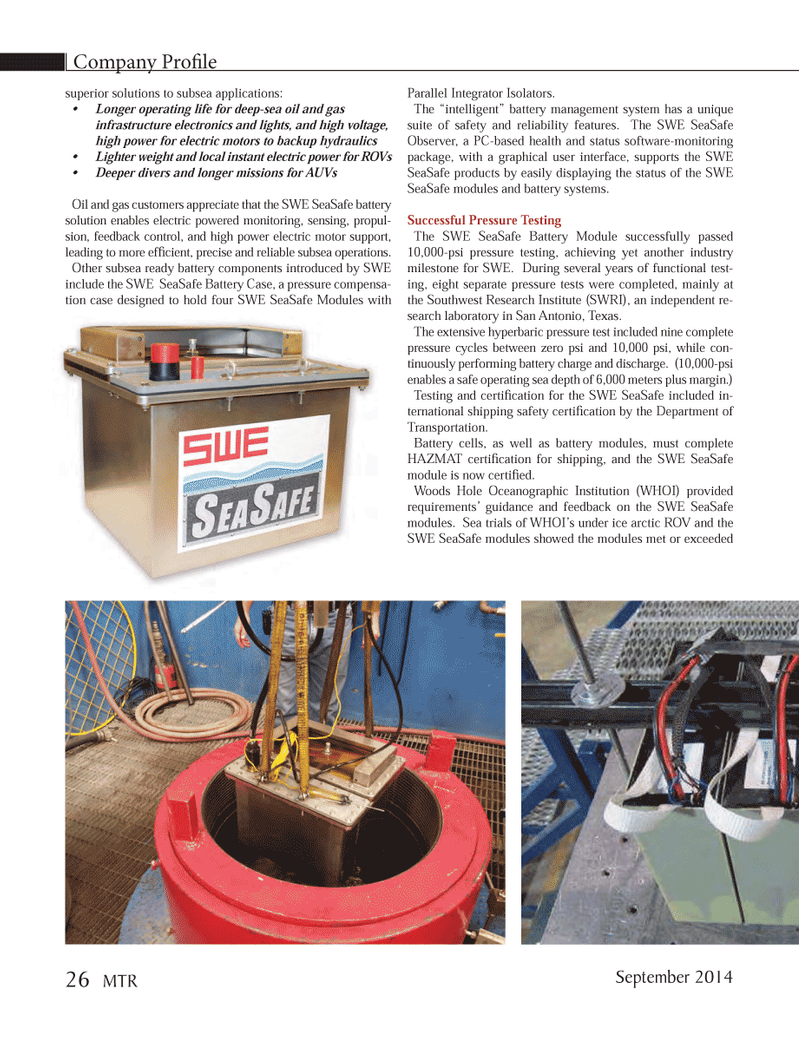
Page 26: of Marine Technology Magazine (September 2014)
Ocean Observation: Gliders, Buoys & Sub-Surface Networks
Read this page in Pdf, Flash or Html5 edition of September 2014 Marine Technology Magazine
superior solutions to subsea applications: Longer operating life for deep-sea oil and gas infrastructure electronics and lights, and high voltage, high power for electric motors to backup hydraulics Lighter weight and local instant electric power for ROVs Deeper divers and longer missions for AUVs
Oil and gas customers appreciate that the SWE SeaSafe battery solution enables electric powered monitoring, sensing, propul- sion, feedback control, and high power electric motor support, leading to more effi cient, precise and reliable subsea operations.
Other subsea ready battery components introduced by SWE include the SWE SeaSafe Battery Case, a pressure compensa- tion case designed to hold four SWE SeaSafe Modules with
Parallel Integrator Isolators.
The “intelligent” battery management system has a unique suite of safety and reliability features. The SWE SeaSafe
Observer, a PC-based health and status software-monitoring package, with a graphical user interface, supports the SWE
SeaSafe products by easily displaying the status of the SWE
SeaSafe modules and battery systems.
Successful Pressure Testing
The SWE SeaSafe Battery Module successfully passed 10,000-psi pressure testing, achieving yet another industry milestone for SWE. During several years of functional test- ing, eight separate pressure tests were completed, mainly at the Southwest Research Institute (SWRI), an independent re- search laboratory in San Antonio, Texas.
The extensive hyperbaric pressure test included nine complete pressure cycles between zero psi and 10,000 psi, while con- tinuously performing battery charge and discharge. (10,000-psi enables a safe operating sea depth of 6,000 meters plus margin.)
Testing and certifi cation for the SWE SeaSafe included in- ternational shipping safety certifi cation by the Department of
Transportation.
Battery cells, as well as battery modules, must complete
HAZMAT certifi cation for shipping, and the SWE SeaSafe module is now certifi ed.
Woods Hole Oceanographic Institution (WHOI) provided requirements’ guidance and feedback on the SWE SeaSafe modules. Sea trials of WHOI’s under ice arctic ROV and the
SWE SeaSafe modules showed the modules met or exceeded
Company Profi le 26 MTR
September 2014
MTR #7 (18-33).indd 26 8/26/2014 11:37:47 AM

 25
25

 27
27
